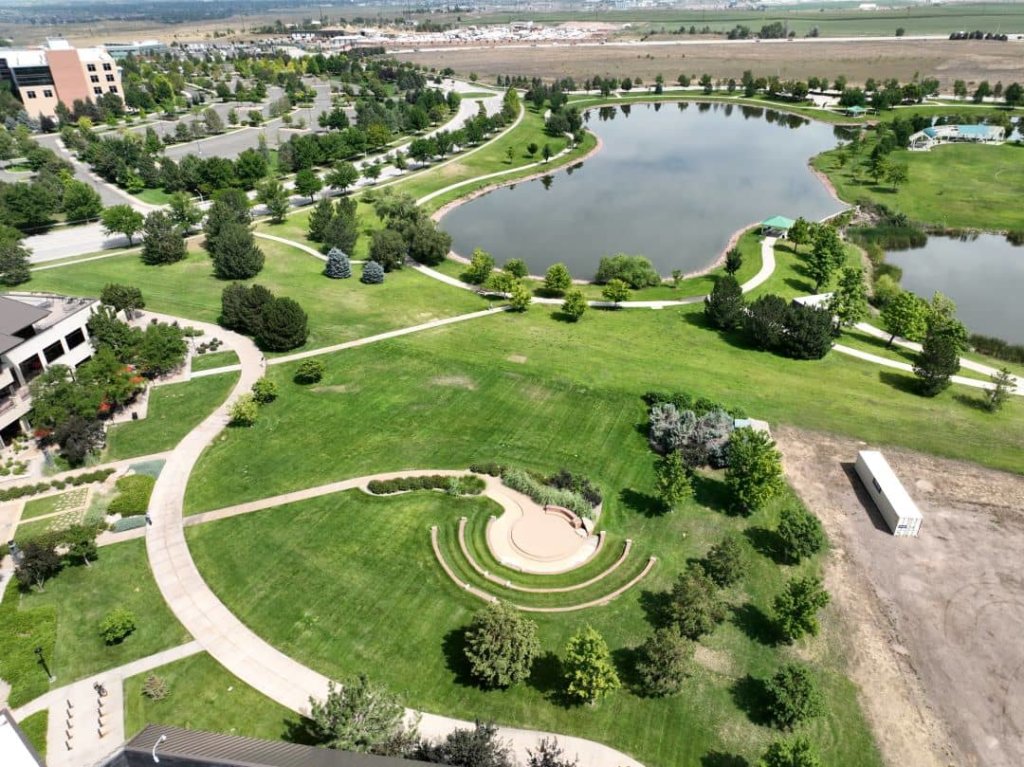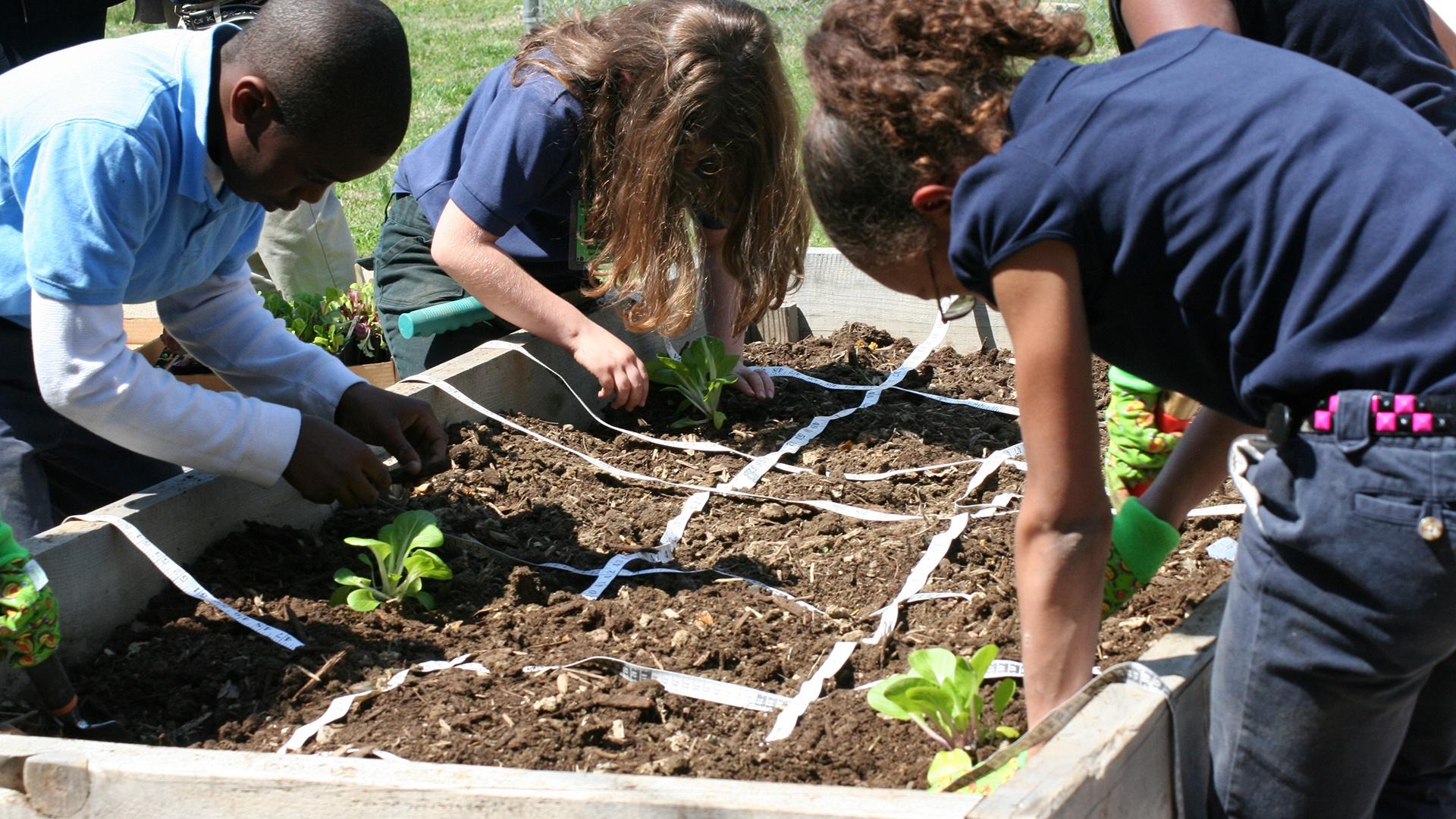
Introduction: The Green Revolution in Your Backyard
In an era defined by environmental awareness, the concept of landscaping has transcended mere aesthetics. It’s no longer just about manicured lawns and vibrant flowerbeds; it’s about creating ecosystems that harmonize with nature, conserve resources, and promote biodiversity. Sustainable landscape maintenance plans are the cornerstone of this green revolution, offering a roadmap to nurture outdoor spaces in an environmentally responsible manner.
Traditional landscaping practices often rely on synthetic fertilizers, harmful pesticides, and excessive water consumption, contributing to pollution, habitat destruction, and resource depletion. Sustainable landscape maintenance, on the other hand, embraces a holistic approach that minimizes environmental impact while enhancing the health and beauty of your landscape. This involves selecting native plants, conserving water, reducing waste, and promoting healthy soil.
This comprehensive guide will delve into the principles, strategies, and practical steps involved in creating and implementing sustainable landscape maintenance plans. Whether you’re a homeowner, a property manager, or a landscaping professional, this information will empower you to transform outdoor spaces into thriving, eco-friendly havens.
Understanding the Core Principles of Sustainable Landscape Maintenance
Sustainable landscape maintenance is built upon several key principles that guide decision-making and practices. These principles ensure that your landscaping efforts contribute to environmental health rather than detract from it.
1. Soil Health: The Foundation of a Thriving Landscape
Healthy soil is the bedrock of any sustainable landscape. It provides essential nutrients, supports root growth, and filters water. Conventional landscaping often neglects soil health, leading to nutrient deficiencies, compaction, and erosion. Sustainable practices prioritize soil improvement through:
- Composting: Recycling organic waste into nutrient-rich compost that enriches the soil.
- Cover Cropping: Planting specific crops to improve soil structure, suppress weeds, and add organic matter.
- No-Till Gardening: Minimizing soil disturbance to preserve beneficial microorganisms and soil structure.
- Soil Testing: Regularly testing soil to determine nutrient levels and pH, allowing for targeted amendments.
By focusing on soil health, you can reduce the need for synthetic fertilizers, improve water retention, and enhance plant resilience.
2. Water Conservation: A Precious Resource
Water scarcity is a growing concern, making water conservation a critical aspect of sustainable landscaping. Traditional lawns and thirsty ornamental plants often consume excessive amounts of water, straining local water supplies. Sustainable approaches to water conservation include:
- Xeriscaping: Designing landscapes with drought-tolerant plants that require minimal irrigation.
- Rainwater Harvesting: Collecting rainwater in barrels or cisterns for irrigation purposes.
- Efficient Irrigation Systems: Using drip irrigation or soaker hoses to deliver water directly to plant roots, minimizing water loss through evaporation.
- Mulching: Applying a layer of organic mulch around plants to retain moisture, suppress weeds, and regulate soil temperature.
By implementing these strategies, you can significantly reduce water consumption while maintaining a lush and vibrant landscape.
3. Native Plants: Embrace Local Biodiversity
Native plants are adapted to the local climate, soil conditions, and pest pressures, making them naturally resilient and low-maintenance. They also provide habitat and food for native wildlife, supporting local ecosystems. Incorporating native plants into your landscape offers numerous benefits:
- Reduced Water Consumption: Native plants are typically drought-tolerant and require less irrigation than non-native species.
- Reduced Fertilizer Use: Native plants are adapted to local soil conditions and require less fertilization.
- Reduced Pesticide Use: Native plants are naturally resistant to local pests and diseases, reducing the need for chemical controls.
- Habitat Creation: Native plants provide food and shelter for native birds, butterflies, and other wildlife.
Choosing native plants is a powerful way to create a sustainable and ecologically beneficial landscape.
4. Integrated Pest Management (IPM): A Holistic Approach to Pest Control
Traditional pest control often relies on broad-spectrum pesticides that can harm beneficial insects, pollute waterways, and pose risks to human health. Integrated Pest Management (IPM) offers a more sustainable and environmentally responsible approach to pest control. IPM involves:
- Monitoring: Regularly inspecting plants for signs of pests or diseases.
- Prevention: Implementing practices that prevent pest outbreaks, such as choosing resistant plant varieties and maintaining healthy soil.
- Cultural Controls: Using cultural practices to manage pests, such as hand-picking insects, pruning infested branches, and removing diseased plants.
- Biological Controls: Introducing beneficial insects or other natural enemies to control pests.
- Chemical Controls: Using pesticides as a last resort, selecting the least toxic options and applying them carefully.
IPM emphasizes a proactive and preventative approach to pest control, minimizing the need for harmful chemicals.
5. Waste Reduction: Closing the Loop
Landscaping activities can generate significant amounts of waste, including yard waste, plastic containers, and discarded tools. Sustainable landscape maintenance aims to reduce waste through:
- Composting: Recycling yard waste into compost for use in the landscape.
- Mulching: Using grass clippings, leaves, and wood chips as mulch.
- Recycling: Recycling plastic containers and other materials.
- Reusing: Reusing pots, tools, and other landscaping supplies.
- Reducing Packaging: Choosing products with minimal packaging.
By reducing waste, you can conserve resources and minimize your environmental footprint.
Creating Your Sustainable Landscape Maintenance Plan: A Step-by-Step Guide
Developing a sustainable landscape maintenance plan involves a systematic process of assessment, planning, implementation, and evaluation. Here’s a step-by-step guide to help you get started:
Step 1: Assess Your Existing Landscape
Begin by evaluating your current landscape practices, identifying areas where you can improve sustainability. Consider the following:
- Soil Health: Assess the condition of your soil, noting any signs of compaction, erosion, or nutrient deficiencies.
- Water Use: Evaluate your irrigation practices, identifying areas where you can reduce water consumption.
- Plant Selection: Assess the types of plants in your landscape, noting whether they are native, drought-tolerant, and pest-resistant.
- Pest Control: Evaluate your current pest control methods, identifying any reliance on harmful pesticides.
- Waste Generation: Assess the amount of waste generated by your landscaping activities.
This assessment will provide a baseline for measuring your progress and identifying areas for improvement.
Step 2: Set Goals and Objectives
Define specific, measurable, achievable, relevant, and time-bound (SMART) goals for your sustainable landscape maintenance plan. Examples of SMART goals include:
- Reduce water consumption by 20% within one year.
- Convert 50% of your lawn to native plants within two years.
- Eliminate the use of synthetic pesticides within six months.
- Compost all yard waste within three months.
Setting clear goals will provide direction and motivation for your efforts.
Step 3: Develop a Detailed Action Plan
Outline the specific actions you will take to achieve your goals. This action plan should include:
- Soil Improvement Strategies: Describe how you will improve soil health, such as through composting, cover cropping, or no-till gardening.
- Water Conservation Measures: Outline the steps you will take to conserve water, such as xeriscaping, rainwater harvesting, or efficient irrigation systems.
- Plant Selection Guidelines: Specify the types of native plants you will use in your landscape.
- IPM Strategies: Describe your approach to pest control, emphasizing monitoring, prevention, and biological controls.
- Waste Reduction Practices: Outline how you will reduce waste through composting, recycling, and reusing.
A detailed action plan will provide a roadmap for implementing your sustainable landscape maintenance plan.
Step 4: Implement Your Plan
Put your action plan into practice, making the necessary changes to your landscaping practices. This may involve:
- Amending the soil with compost or other organic matter.
- Installing a rainwater harvesting system.
- Replacing thirsty plants with drought-tolerant natives.
- Introducing beneficial insects to control pests.
- Setting up a composting system for yard waste.
Be patient and persistent, as it may take time to see the full benefits of your sustainable landscape maintenance plan.
Step 5: Monitor and Evaluate Your Progress
Regularly monitor your progress towards your goals, tracking key metrics such as water consumption, waste generation, and plant health. Evaluate the effectiveness of your strategies and make adjustments as needed. This ongoing monitoring and evaluation will ensure that your sustainable landscape maintenance plan remains effective and aligned with your goals.
Specific Strategies for Sustainable Landscape Maintenance
Here are some specific strategies you can incorporate into your sustainable landscape maintenance plan:
1. Composting: Turning Waste into Treasure
Composting is a natural process that decomposes organic matter into a nutrient-rich soil amendment. It’s a simple and effective way to reduce waste and improve soil health. You can compost yard waste such as leaves, grass clippings, and twigs, as well as food scraps such as vegetable peels and coffee grounds.
To start composting, you’ll need a compost bin or pile. Choose a location that is well-drained and receives partial shade. Layer green materials (such as grass clippings and food scraps) with brown materials (such as leaves and twigs). Keep the compost pile moist and turn it regularly to aerate it. In a few months, you’ll have nutrient-rich compost that you can use to amend your soil.
2. Mulching: Nature’s Blanket
Mulching involves applying a layer of organic material around plants to retain moisture, suppress weeds, and regulate soil temperature. Mulch can be made from a variety of materials, including wood chips, bark, straw, and leaves.
Apply a 2-4 inch layer of mulch around plants, keeping it away from the base of the stems to prevent rot. Mulch will gradually decompose, adding organic matter to the soil and improving its fertility.
3. Rainwater Harvesting: Capturing the Sky’s Gift
Rainwater harvesting involves collecting rainwater from rooftops or other surfaces and storing it for later use. This is a great way to conserve water and reduce your reliance on municipal water supplies. You can collect rainwater in barrels or cisterns and use it to irrigate your landscape.
To set up a rainwater harvesting system, you’ll need a rain barrel or cistern, a downspout diverter, and a hose. Install the downspout diverter to direct rainwater into the rain barrel or cistern. Use the hose to connect the rain barrel or cistern to your irrigation system.
4. Drip Irrigation: Precision Watering
Drip irrigation is a highly efficient watering method that delivers water directly to plant roots, minimizing water loss through evaporation. Drip irrigation systems consist of a network of tubes and emitters that slowly release water over time.
Install drip irrigation systems in your flowerbeds, vegetable gardens, and around trees and shrubs. Drip irrigation can save you a significant amount of water compared to traditional sprinkler systems.
5. Native Plant Gardening: A Celebration of Local Flora
Native plants are adapted to the local climate, soil conditions, and pest pressures, making them naturally resilient and low-maintenance. They also provide habitat and food for native wildlife, supporting local ecosystems. Incorporating native plants into your landscape is a powerful way to create a sustainable and ecologically beneficial outdoor space.
Research the native plants that are suitable for your region and incorporate them into your landscape design. Native plants will thrive with minimal care and will attract beneficial insects and pollinators to your garden.
6. Grasscycling: Recycling Clippings in Place
Grasscycling involves leaving grass clippings on the lawn after mowing, rather than bagging them. This is a simple and effective way to recycle nutrients back into the soil and reduce the need for fertilizers. Grass clippings decompose quickly, releasing nitrogen and other essential nutrients that promote healthy lawn growth.
To grasscycle effectively, mow your lawn regularly, removing no more than one-third of the grass blade at a time. Use a mulching mower to finely chop the grass clippings and distribute them evenly over the lawn.
7. Green Lawn Care: Nurturing a Healthy Turf Naturally
Traditional lawn care practices often rely on synthetic fertilizers, herbicides, and pesticides, which can harm the environment and pose risks to human health. Green lawn care emphasizes natural and sustainable methods for maintaining a healthy and vibrant lawn.
Green lawn care practices include:
- Soil Testing: Regularly testing your soil to determine nutrient levels and pH.
- Organic Fertilizers: Using organic fertilizers such as compost, manure, or seaweed extract to nourish your lawn.
- Weed Control: Using natural weed control methods such as hand-pulling, mulching, or vinegar sprays.
- Pest Control: Using biological controls or other natural methods to manage pests.
- Proper Mowing: Mowing your lawn at the correct height and frequency.
- Aeration: Aerating your lawn to improve soil drainage and aeration.
- Overseeding: Overseeding your lawn to fill in bare spots and improve density.
8. Vertical Gardening: Growing Up, Not Out
Vertical gardening is a technique that involves growing plants on vertical surfaces, such as walls, fences, or trellises. This is a great way to maximize space in small gardens or urban environments. Vertical gardens can be used to grow herbs, vegetables, flowers, or ornamental plants.
To create a vertical garden, you can use a variety of materials, such as pallets, hanging planters, or modular systems. Choose plants that are well-suited to vertical growing and provide them with adequate support and watering.
9. Xeriscaping: Designing for Drought
Xeriscaping is a landscaping technique that minimizes the need for irrigation by using drought-tolerant plants and water-wise design principles. Xeriscaping is a great way to conserve water in arid or semi-arid climates.
Xeriscaping principles include:
- Planning and Design: Creating a detailed landscape plan that incorporates drought-tolerant plants and water-wise design principles.
- Soil Improvement: Amending the soil with compost or other organic matter to improve water retention.
- Efficient Irrigation: Using drip irrigation or other efficient watering methods.
- Mulching: Applying a layer of mulch around plants to retain moisture and suppress weeds.
- Turf Alternatives: Replacing traditional lawns with drought-tolerant groundcovers or other alternatives.
- Plant Selection: Choosing drought-tolerant plants that are well-suited to the local climate and soil conditions.
- Maintenance: Properly maintaining the landscape to ensure that plants remain healthy and water-efficient.
10. Smart Technology: Automating Sustainability
Smart technology can play a significant role in sustainable landscape maintenance by automating tasks, optimizing resource use, and providing valuable data for decision-making. Smart irrigation controllers, for example, can adjust watering schedules based on weather conditions and soil moisture levels, preventing overwatering and conserving water. Smart sensors can monitor soil health, plant health, and environmental conditions, providing real-time data that can be used to optimize landscape management practices.
Overcoming Challenges in Sustainable Landscape Maintenance
While sustainable landscape maintenance offers numerous benefits, it can also present some challenges. Here are some common challenges and strategies for overcoming them:
- Initial Costs: Implementing sustainable practices may require an initial investment in new equipment, materials, or plant varieties. To overcome this challenge, prioritize the most cost-effective strategies and implement them gradually. Look for rebates or incentives that can help offset the costs.
- Lack of Knowledge: Sustainable landscape maintenance requires knowledge of soil science, plant physiology, pest management, and other specialized areas. To overcome this challenge, seek out educational resources, attend workshops, or consult with a qualified landscape professional.
- Resistance to Change: Some people may be resistant to changing their traditional landscaping practices. To overcome this challenge, educate them about the benefits of sustainable landscape maintenance and demonstrate the positive results.
- Time Commitment: Sustainable landscape maintenance may require more time and effort than traditional practices, especially in the initial stages. To overcome this challenge, prioritize tasks, delegate responsibilities, and use efficient tools and techniques.
- Pest and Disease Problems: Sustainable landscapes may be more susceptible to pest and disease problems if not properly managed. To overcome this challenge, implement integrated pest management (IPM) strategies and monitor plants regularly for signs of problems.
The Future of Sustainable Landscape Maintenance
The future of sustainable landscape maintenance is bright, with increasing awareness of environmental issues and growing demand for eco-friendly practices. Technological advancements, such as smart irrigation systems and soil sensors, will continue to improve the efficiency and effectiveness of sustainable landscape management. As more people embrace sustainable landscaping, the benefits will extend beyond individual properties to create healthier and more resilient communities.
Conclusion: Cultivating a Greener Tomorrow
Sustainable landscape maintenance plans are not just about maintaining outdoor spaces; they’re about cultivating a greener tomorrow. By embracing these principles, we can create landscapes that are not only beautiful but also environmentally responsible, conserving resources, promoting biodiversity, and enhancing the health of our planet. It’s a journey, not a destination, and every step towards sustainability makes a difference.


